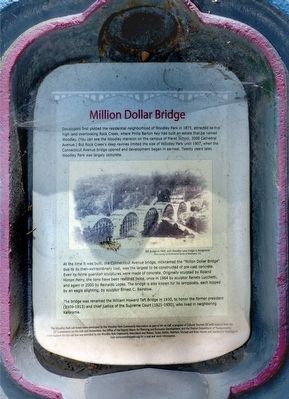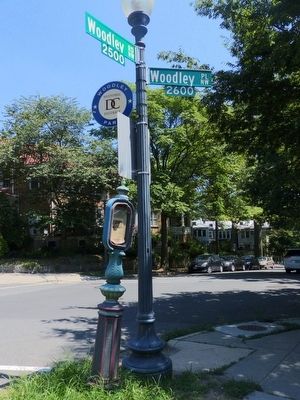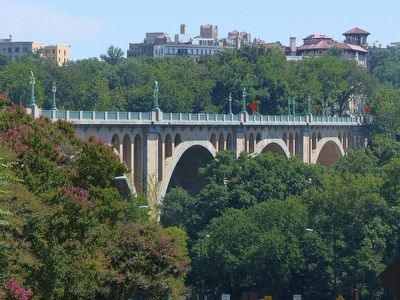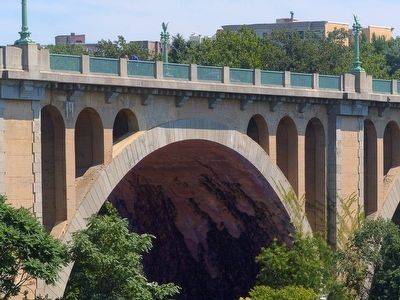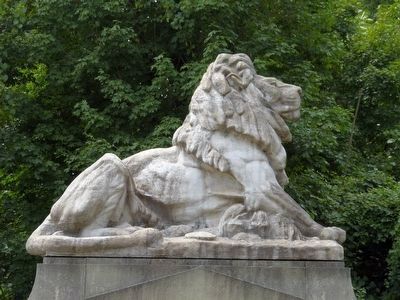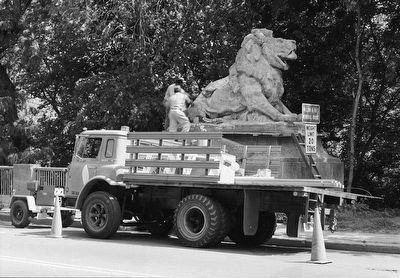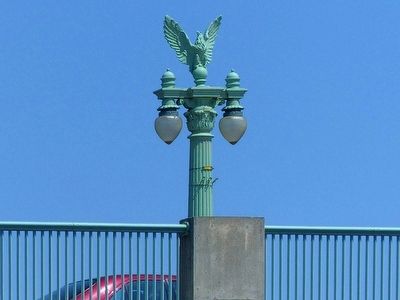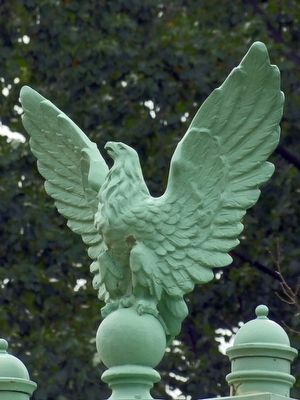Woodley Park in Northwest Washington in Washington, District of Columbia — The American Northeast (Mid-Atlantic)
Million Dollar Bridge
Developers first plotted the residential neighborhood of Woodley Park in 1875, attached to this high land overlooking Rock Creek, where Philip Barton Key had built an estate that he named Woodley. (You can see the Woodley mansion on the campus of Maret School, 3000 Cathedral Avenue.) But Rock Creek's deep ravines limited the size of Woodley Park until 1907, when the Connecticut Avenue bridge opened and development began in earnest. Twenty years later, Woodley Park was largely complete.
At the time it was built, the Connecticut Avenue bridge, nicknamed “Million Dollar Bridge” due to its then-extraordinary cost, was the largest to be constructed of pre-cast concrete. Even its feline guardian sculptures were made of concrete. Originally sculpted by Roland Hinton Perry, the lions have been restored twice, once in 1964 by sculptor Renato Lucchetti, and again in 2000 by Reinaldo Lopez. The bridge is also known for its lamp posts, each topped with an eagle alighting, by sculptor Ernest C. Bairstow.
The bridge was renamed the William Howard Taft Bridge in 1930, to honor the former president (1909-1913) and chief justice of the Supreme Court (1921-1930), who lived in neighboring Kalorama.
Erected by Cultural Tourism DC.
Topics and series. This historical marker is listed in these topic lists: Architecture • Arts, Letters, Music • Bridges & Viaducts • Industry & Commerce. In addition, it is included in the DC, Art on Call, and the Former U.S. Presidents: #27 William Howard Taft series lists. A significant historical year for this entry is 1875.
Location. 38° 55.518′ N, 77° 3.085′ W. Marker is in Northwest Washington in Washington, District of Columbia. It is in Woodley Park. Marker is at the intersection of Woodley Road Northwest and Woodley Place Northwest, on the right when traveling east on Woodley Road Northwest. Touch for map. Marker is at or near this postal address: 2520 Woodley Road Northwest, Washington DC 20008, United States of America. Touch for directions.
Other nearby markers. At least 8 other markers are within walking distance of this marker. Herring Highway (about 600 feet away, measured in a direct line); Adams Mill (about 700 feet away); Walsh Memorial (approx. 0.2 miles away); Historic Cemetery (approx. 0.2 miles away); Harry Wardman (approx. ¼ mile away); Woodley Road Neighbors (approx. ¼ mile away); Rediscovery and Remembrance (approx. ¼ mile away); Soldiers, Sailors, and Refugees of War (approx. ¼ mile away). Touch for a list and map of all markers in Northwest Washington.
Also see . . . Historic American Buildings Survey Record for the Connecticut Bridge. Includes more than 20 photos, schematics, and a detailed history of the bridge. (Submitted on August 21, 2015.)
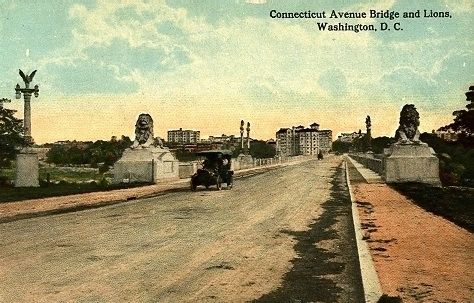
circa 1910
10. Connecticut Avenue Bridge and Lions, Washington, D.C.
Designed by prominent engineer George B. Morison, Connecticut Avenue Bridge was described at the time of its construction as the largest concrete arch in the world. This seven-arch span was erected without steel reinforcement, composed entirely of monolithic concrete masonry and molded concrete block. It was an inspiration to Washington bridge designers of the twentieth century. - Historic American Buildings Survey Statement of Significance
Credits. This page was last revised on January 30, 2023. It was originally submitted on August 21, 2015, by Allen C. Browne of Silver Spring, Maryland. This page has been viewed 507 times since then and 17 times this year. Photos: 1, 2, 3, 4, 5, 6, 7, 8, 9. submitted on August 21, 2015, by Allen C. Browne of Silver Spring, Maryland. 10. submitted on August 21, 2015. • Andrew Ruppenstein was the editor who published this page.
